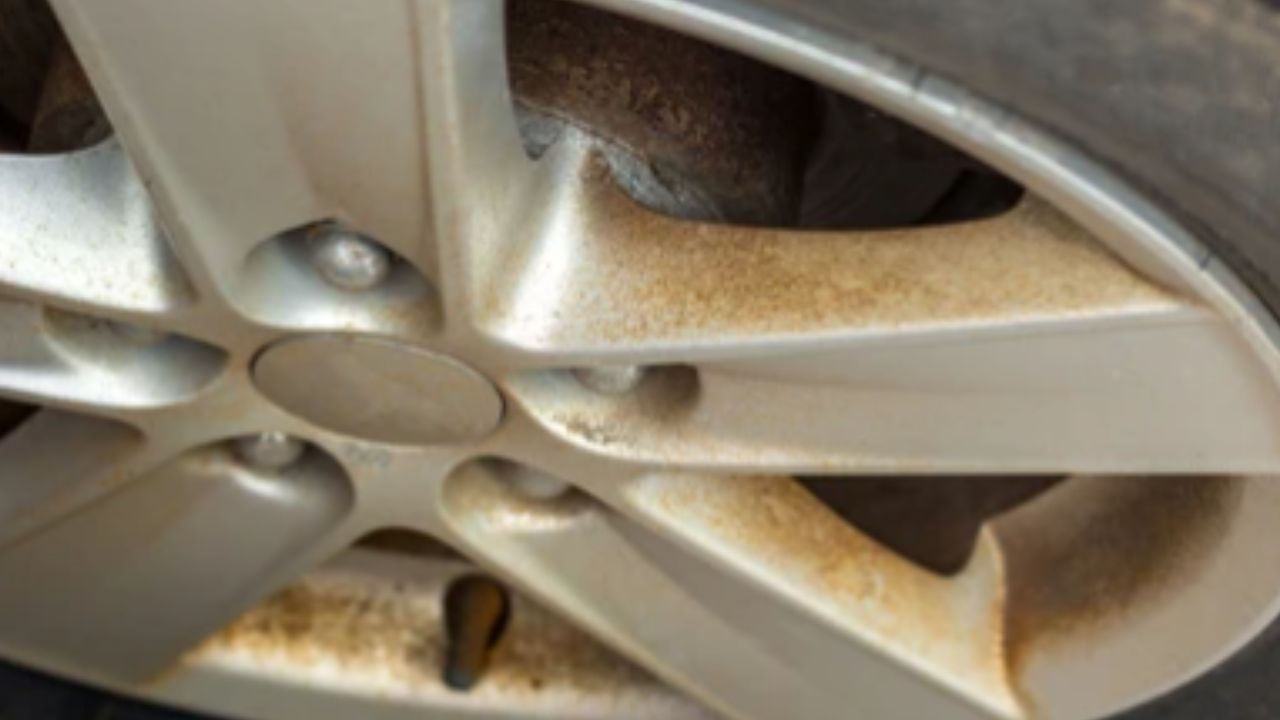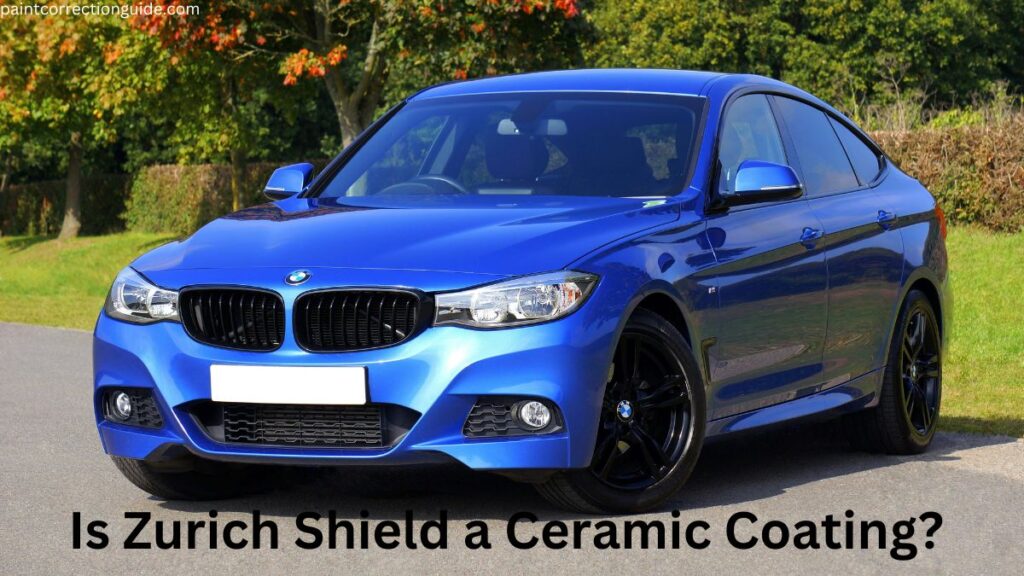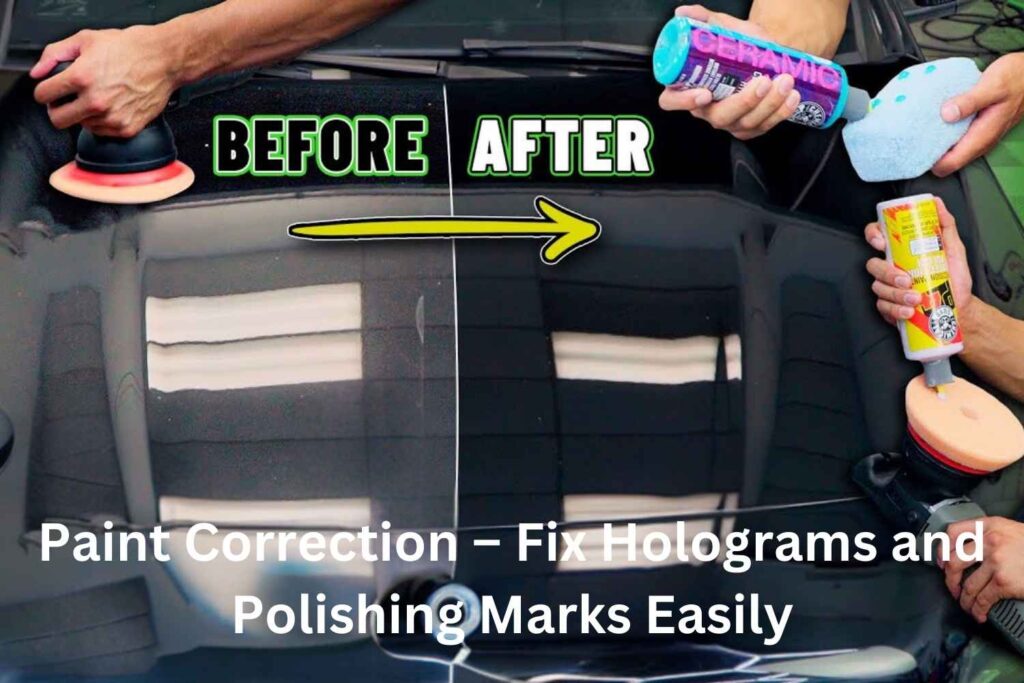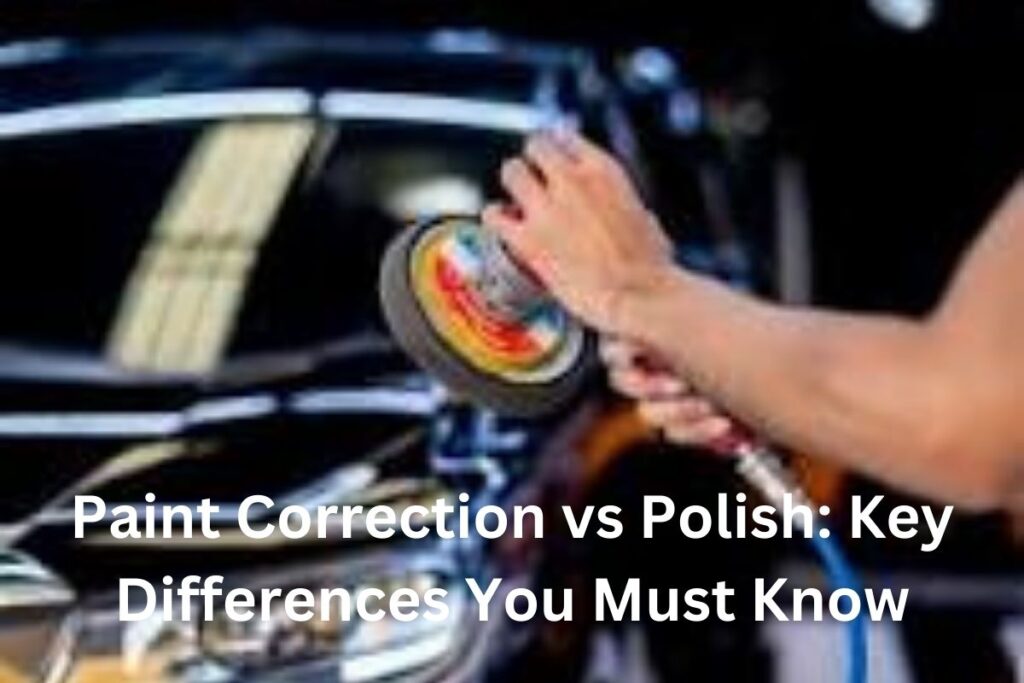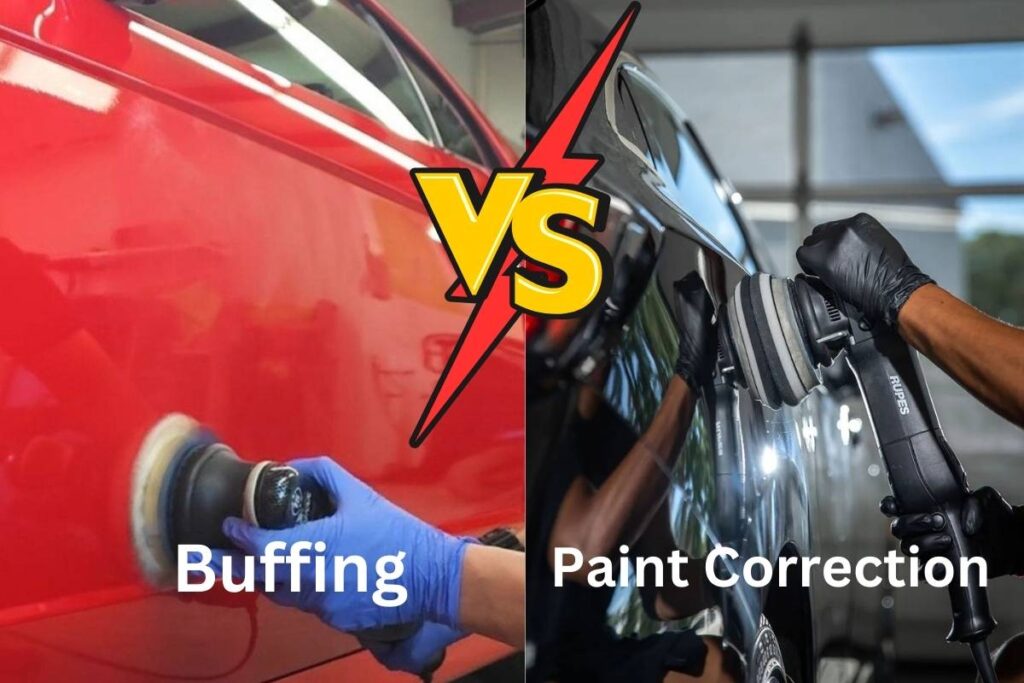Have you ever noticed how your car’s wheels get dirty again, even after you just cleaned them? That dark, messy stuff on your rims is brake dust. It’s not just regular dirt. It’s made of tiny bits from your brake pads, little pieces of metal, and sometimes rubber from the road. If you don’t clean it, this dust can build up and harm your wheels. But don’t worry! I’ll show you how to remove brake dust step by step, in an easy way that works.
Cleaning brake dust keeps your car looking nice. It also stops long-term damage, like rust and scratches on your rims. In this guide, I’ll show you the best ways to clean brake dust, whether you have a little bit or a lot of sticky grime. Plus, I’ll help you learn how to keep brake dust from sticking to your wheels in the future.
Let’s get started and make your wheels look new again!
Table of Contents
ToggleWhat is Brake Dust and Why Does It Accumulate on Rims?
Before we start cleaning, it’s helpful to know what brake dust is and why it covers your wheels.
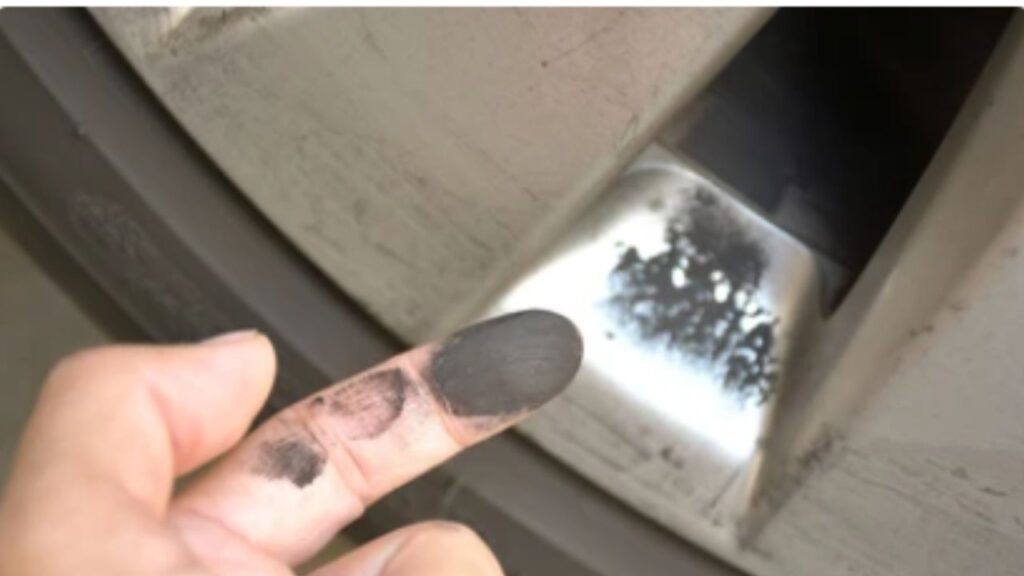
What Causes Brake Dust?
Every time you press your car’s brakes, the brake pads rub against the rotors (the spinning discs in your wheels). This friction wears down the brake pads. Small bits of the pads, along with tiny pieces of metal from the rotors, break off and form brake dust.
Why Does Brake Dust Stick to Rims?
Your wheels sit right next to the brakes, so brake dust ends up on the rims. Over time, this dust builds up and sticks, especially when the wheels get hot from driving. Worse, the dust is acidic because it contains metal, which can cause rust or small dents if not cleaned regularly.
Are Some Wheels More Likely to Get Brake Dust?
Yes! The type of brake pads you use affects how much dust you get. Ceramic brake pads make less dust than semi-metallic pads, which are more common but leave more dirt. Different wheel finishes, like chrome or painted rims, may also show more dust.
Now that you know what brake dust is, let’s move on to cleaning it!
How to Safely Remove Brake Dust: Tools and Preparation
Cleaning brake dust can seem like a big task, but with the right tools and preparation, you’ll find it’s quite manageable. Here’s a list of what you’ll need to get started.
Essential Tools and Materials
- Wheel cleaner: Choose a cleaner that’s formulated specifically for removing brake dust. You can find several brands that work wonders, like Meguiar’s Hot Rims or Griot’s Garage Wheel Cleaner. Be sure to pick one that’s safe for your wheel finish, whether they’re alloy, chrome, or painted rims.
- Soft-bristle wheel brush: A must for getting into the nooks and crannies of your wheels without scratching them.
- Microfiber towels: These are perfect for wiping away dirt and grime without damaging your wheels.
- Bucket of water: You’ll want some clean water on hand for rinsing.
- Garden hose or pressure washer: Rinsing your wheels thoroughly is key to a good clean.
- Wheel sealant or wax: This helps protect your wheels from future buildup and makes cleaning easier the next time around.
Preparing to Clean Your Wheels
Before you start cleaning, it’s important to make sure your wheels are cool to the touch. If you’ve been driving recently, give your car some time to cool down before you start. Hot wheels can cause cleaning products to dry too quickly, which might leave streaks or make the cleaning process less effective.
Also, try to avoid direct sunlight when cleaning your rims. It’s best to work in a shaded area so that the cleaning products don’t dry out too fast.
Once you have all your tools ready, let’s get into the step-by-step guide on how to clean brake dust off your rims.
Step-by-Step Guide: How to Remove Brake Dust from Rims
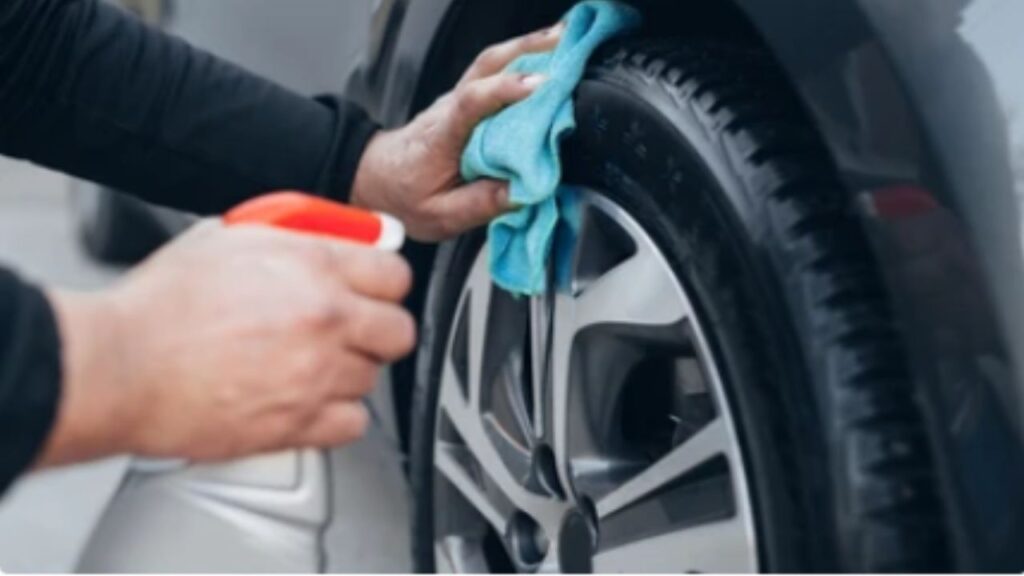
Now that you have your tools and materials ready, it’s time to get into the actual cleaning process. I’ll guide you through each step to ensure you get the best results without damaging your rims.
Step 1: Rinse the Wheels
The first thing you want to do is rinse your wheels thoroughly with a garden hose or a pressure washer. This step helps remove any loose dirt or debris that could scratch the surface of your rims when you start scrubbing. If you’re using a pressure washer, make sure to use a low-pressure setting to avoid damaging the wheel’s finish.
Step 2: Apply Wheel Cleaner
Next, take your wheel cleaner and spray it generously onto the surface of your rims. Be sure to cover the entire wheel, paying close attention to areas where brake dust tends to accumulate, such as between the spokes and around the lug nuts. Some cleaners will foam up, while others will just sit on the surface. Let the cleaner sit for about 3-5 minutes to give it time to break down the brake dust.
Pro Tip: If you prefer a DIY approach, you can make a homemade brake dust cleaner by mixing warm water and dish soap. This is effective for light dust and is gentle on the wheel finish.
Step 3: Scrub with a Soft-Bristle Brush
Once the cleaner has had time to do its job, it’s time to start scrubbing. Grab your soft-bristle brush and gently scrub the surface of the wheel. Focus on the dirtiest spots, especially the inside of the rims where brake dust tends to build up. For hard-to-reach areas like lug nuts or crevices, you can use a smaller detailing brush or an old toothbrush.
If you encounter stubborn brake dust that won’t come off easily, don’t panic! Simply reapply more wheel cleaner and give it some extra time to soak in. Patience is key when dealing with baked-on brake dust.
Step 4: Rinse Thoroughly
After scrubbing, use your hose or pressure washer to rinse off the cleaner and all the loosened grime. Make sure no soap or brake dust residue is left behind, as this can dry and damage the rims. Rinse each wheel thoroughly to prevent any streaks or leftover residue.
Step 5: Dry the Rims
Once your rims are clean, grab a microfiber towel and dry them completely. This prevents water spots and ensures that your rims look shiny and spotless. It’s a good idea to have a separate towel just for drying the wheels, as it’s likely to get quite dirty from the remaining brake dust.
Step 6: Inspect for Missed Spots
After drying, take a moment to inspect your wheels for any areas you might have missed. If you still see brake dust in certain spots, especially on the inner parts of the rim, don’t hesitate to repeat the cleaning process. Sometimes, brake dust can be very stubborn, especially if it’s been allowed to build up over time.
Pro Tips for Stubborn Brake Dust and Deep Cleaning
Sometimes, especially if it’s been a while since you last cleaned, brake dust can be tough to remove. If you’ve already tried the steps above and still see grime, don’t worry. Here are some advanced ways to deal with the harder spots.
Using Iron Removers for Heavy Brake Dust
If a regular cleaner isn’t working, try an iron remover. These products target the metal particles in brake dust, which are often the hardest to remove. Iron removers work by reacting with the metal, breaking it down so you can easily wipe it away. A good option is 3D Iron Remover.
To use, spray it on and let it sit. You might notice it turns purple as it reacts with the metal. Then, scrub and rinse as usual. This works well if you have alloy or chrome wheels, which collect more brake dust.
Clay Bar Treatment for Stubborn Brake Dust
Another great way to remove tough brake dust is with a clay bar. This method is often used on car paint but works well for wheels too. A clay bar can grab onto the dirt that scrubbing misses.
To use, spray a lubricant (usually included in the clay bar kit) on the wheel. Then, gently rub the clay bar over the surface. It will lift off the remaining dust. After that, rinse and dry the wheels.
Preventing Future Brake Dust Buildup: How to Keep Your Wheels Cleaner for Longer
Now that your wheels are clean and shiny, the next step is keeping them that way. Brake dust will keep building up as long as you drive, but you can do a few things to reduce it and make future cleaning easier.
1. Upgrade to Ceramic Brake Pads
One way to reduce brake dust is by using ceramic brake pads. These pads create less dust compared to semi-metallic pads, which are more common. The dust they do produce is lighter and doesn’t stick as much to your wheels.
While ceramic pads cost more, they are worth it if you want cleaner wheels. They’re also quieter and last longer, which helps extend the life of your brakes.
2. Use a Wheel Sealant or Wax
After cleaning your wheels, applying a wheel sealant or wax can help prevent dust from sticking. These products act as a barrier, keeping dust, dirt, and grime from building up.
Some sealants also repel water, which can help wash off dust before it sticks. You can apply sealant every few months or when you see the protective layer wearing off.
3. Install Brake Dust Shields
Another option is to use brake dust shields. These are barriers that sit behind the wheels and catch the dust before it reaches the rims. Some worry about these shields affecting brake airflow, but modern shields are designed to avoid this problem.
This is a good choice if you want to keep your rims clean and don’t mind the installation.
4. Clean Your Wheels Regularly
The best way to prevent heavy buildup is to clean your wheels regularly. If you clean them every week or two, dust won’t have a chance to stick. A simple rinse with a hose and wipe down with a microfiber towel can keep your wheels looking good without deep cleaning each time.
5. Avoid Aggressive Braking
The more you brake hard, the more brake dust builds up. If you drive smoothly and brake gently, you will create less dust over time.
Long-Term Maintenance Tips to Keep Your Rims Looking Brand New
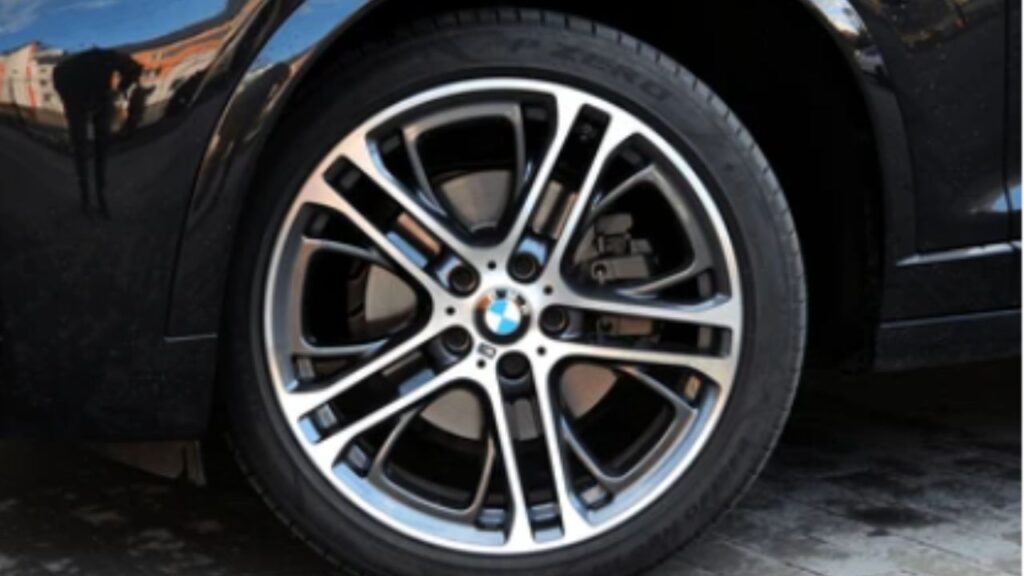
Once you’ve cleaned your wheels, it’s important to keep them looking great. Regular maintenance helps your wheels last longer by preventing rust and damage. Here are some easy tips to keep your wheels clean between deep cleanings.
1. Schedule Regular Cleanings
Cleaning your wheels often is the best way to stop brake dust from building up. When dust sits too long, it sticks and becomes hard to remove. Wash your wheels every one to two weeks to keep the dust from sticking.
If you’re short on time, a quick hose rinse and a wipe with a microfiber cloth will help.
2. Reapply Wheel Sealants or Wax
If you use wheel sealant or wax, remember it doesn’t last forever. You’ll need to reapply it every few months to keep the protective barrier strong. Some products last longer than others, especially in rough weather.
After a deep clean, reapply sealant to keep your wheels protected from dust and dirt.
3. Use the Right Cleaning Tools
Using the right tools can make a big difference. Microfiber towels, soft-bristle brushes, and wheel sponges are best for cleaning your wheels without damaging them. Don’t use the same cloth on your wheels and car body, as wheels are dirtier and could scratch your car.
Keep a separate bucket just for cleaning wheels to avoid spreading dirt.
4. Inspect for Damage Regularly
Even with regular cleaning, you should check your wheels for scratches, rust, or discoloration. If you find rust or damage, deal with it right away. Use a rust remover to stop it from getting worse. For serious damage, see a professional.
5. Be Mindful of Weather
Driving in tough weather can speed up brake dust buildup. Winter driving is hard on wheels because salt and slush stick to rims and cause rust. Wash your wheels more often in the winter and dry them after each wash.
You might also want to switch to winter tires if you live in a cold area. These tires protect your regular wheels and make your car safer in the snow.
Conclusion: Keep Your Rims Clean and Protected
By now, you should feel confident about cleaning brake dust off your wheels and keeping them in good shape. It might seem tough at first, but with the right tools and regular care, you can keep your wheels looking great. Brake dust is a part of driving, but it doesn’t have to be a big problem. Whether you clean with soap and water or use special products like iron removers or wheel sealants, these steps will help you protect your wheels and prevent long-term damage.The key to stopping brake dust buildup is to clean your wheels often and use coatings that stop dirt from sticking. Switching to ceramic brake pads or adding brake dust shields can also help you clean your wheels less often.
Frequently Asked Questions (FAQ)
How to remove brake dust from rims without removing them?
You don’t need to take off the rims to clean brake dust. Just spray a wheel cleaner on the rims. Let it sit for a few minutes. Then scrub with a soft brush and rinse with water to remove the dirt.
How to remove brake dust from rims with vinegar?
Mix white vinegar and water in equal parts. Spray it on the rims. Let it sit for a few minutes. Then scrub with a soft cloth or brush. Vinegar works for light dirt, but not for heavy brake dust.
Will WD-40 remove brake dust?
WD-40 can loosen brake dust, but it’s not the best choice. It leaves an oily layer that attracts more dirt. A wheel cleaner is better for removing brake dust.
What removes brake dust from rims?
A homemade remedy is dish soap mixed with warm water. Apply it to the rims, let it sit, and scrub with a brush. For tougher spots, mix baking soda with water to make a paste, then scrub.
Best product to clean brake dust off rims?
Top products include Meguiar’s Hot Rims, Griot’s Garage Wheel Cleaner, and Chemical Guys Diablo Gel. These break down brake dust and are safe for all wheel types.
How to remove brake dust from black rims?
Black rims can scratch easily. Use a pH-balanced cleaner and a soft microfiber cloth. Rinse well and dry with a towel to avoid streaks. Apply a wheel sealant to prevent dust buildup.

